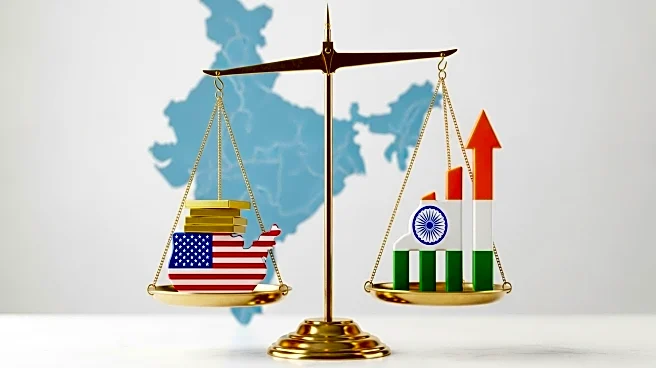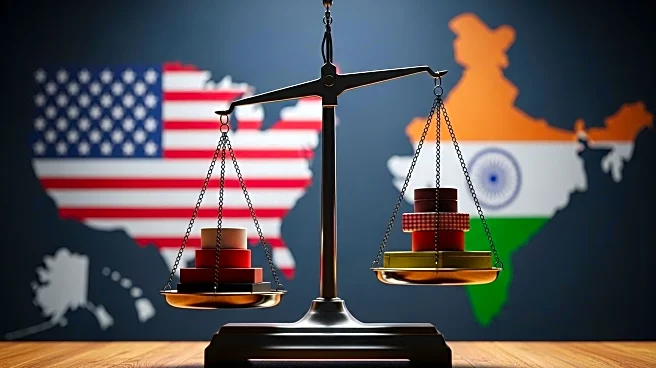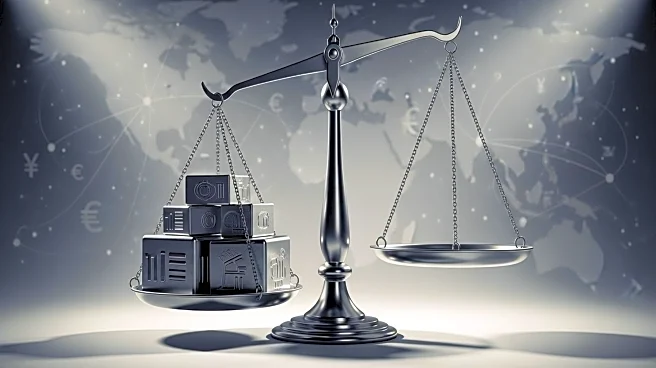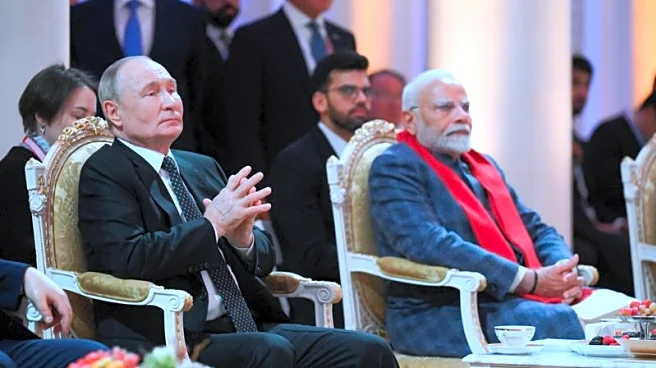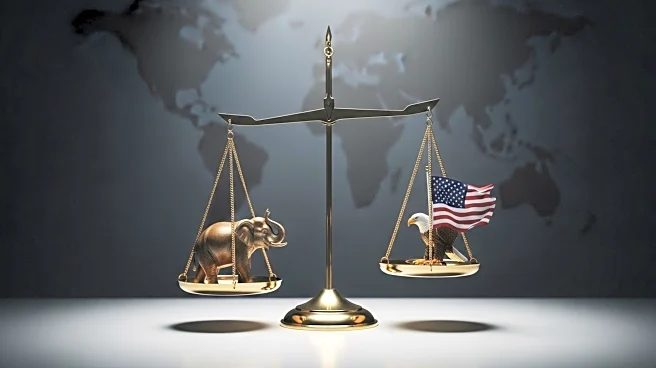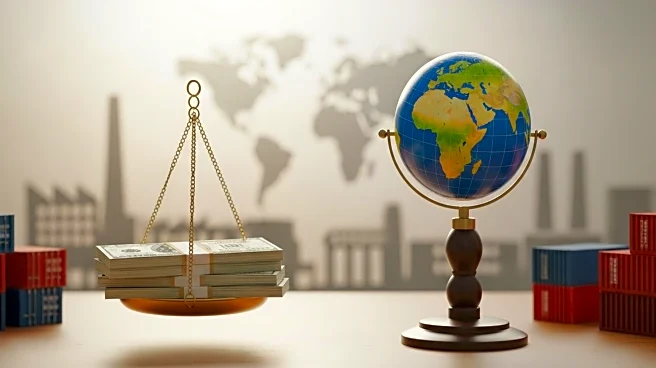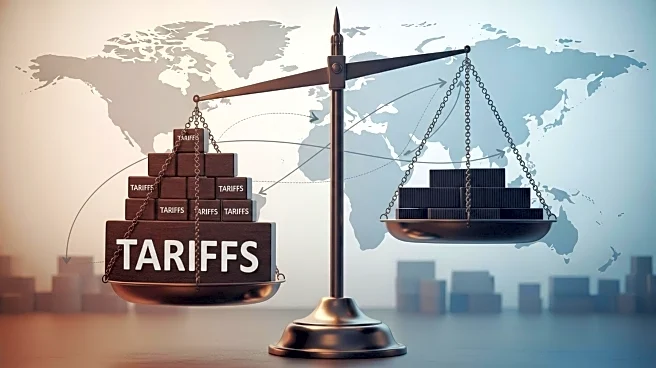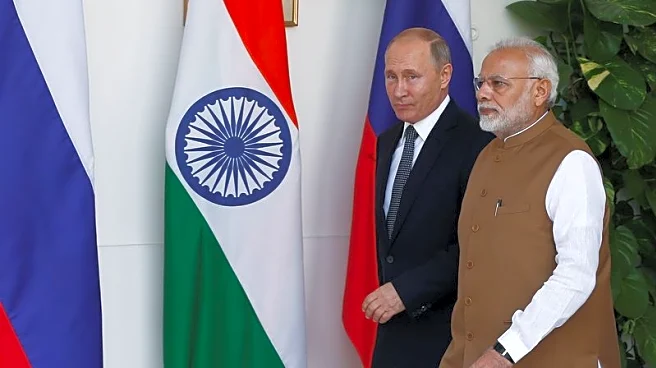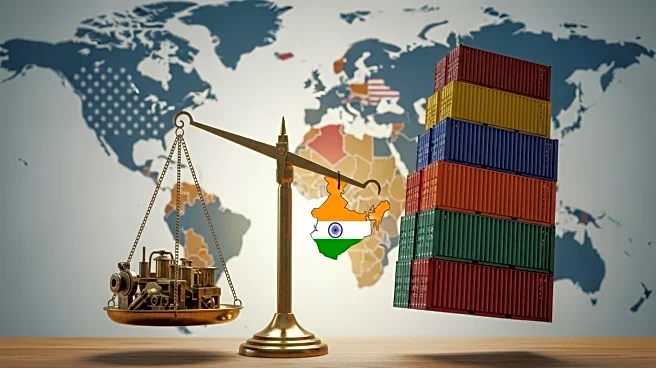What is the story about?
What's Happening?
The United States has implemented a significant increase in tariffs on imports from India, raising them to as much as 50%. This move, initiated by President Trump, is a response to India's purchase of Russian oil, which the U.S. claims funds Moscow's war in Ukraine. The tariffs, which include a punitive 25% levy on top of an existing 25% tariff, affect a wide range of goods such as garments, gems, jewelry, footwear, sporting goods, furniture, and chemicals. The Indian government is engaging with exporters to mitigate the impact, considering financial assistance and exploring alternative markets through existing trade agreements with countries like the U.K., Australia, and the UAE.
Why It's Important?
The tariff increase poses a significant challenge to India's export sector, potentially affecting 55% of its $87 billion in merchandise exports to the U.S. This could benefit competitors like Vietnam, Bangladesh, and China, while threatening up to 2 million jobs in India. The move also raises concerns about the broader U.S.-India relationship, which is crucial for both countries given their shared security interests, particularly regarding China. The tariffs could undermine India's position as an alternative manufacturing hub to China, impacting sectors such as electronics and smartphones.
What's Next?
India is likely to continue diplomatic efforts to negotiate a reduction in tariffs, while simultaneously seeking to bolster its export markets through existing trade agreements. The Indian government may provide financial support to affected exporters and consider policy reforms to enhance competitiveness. Analysts suggest that India could benefit from further economic reforms and a less protectionist trade strategy to mitigate the impact of the tariffs.
Beyond the Headlines
The tariff dispute highlights the complexities of international trade relations and the geopolitical tensions influencing economic decisions. It underscores the challenges faced by countries balancing economic interests with political alliances, particularly in the context of global energy security and regional stability.
AI Generated Content
Do you find this article useful?
